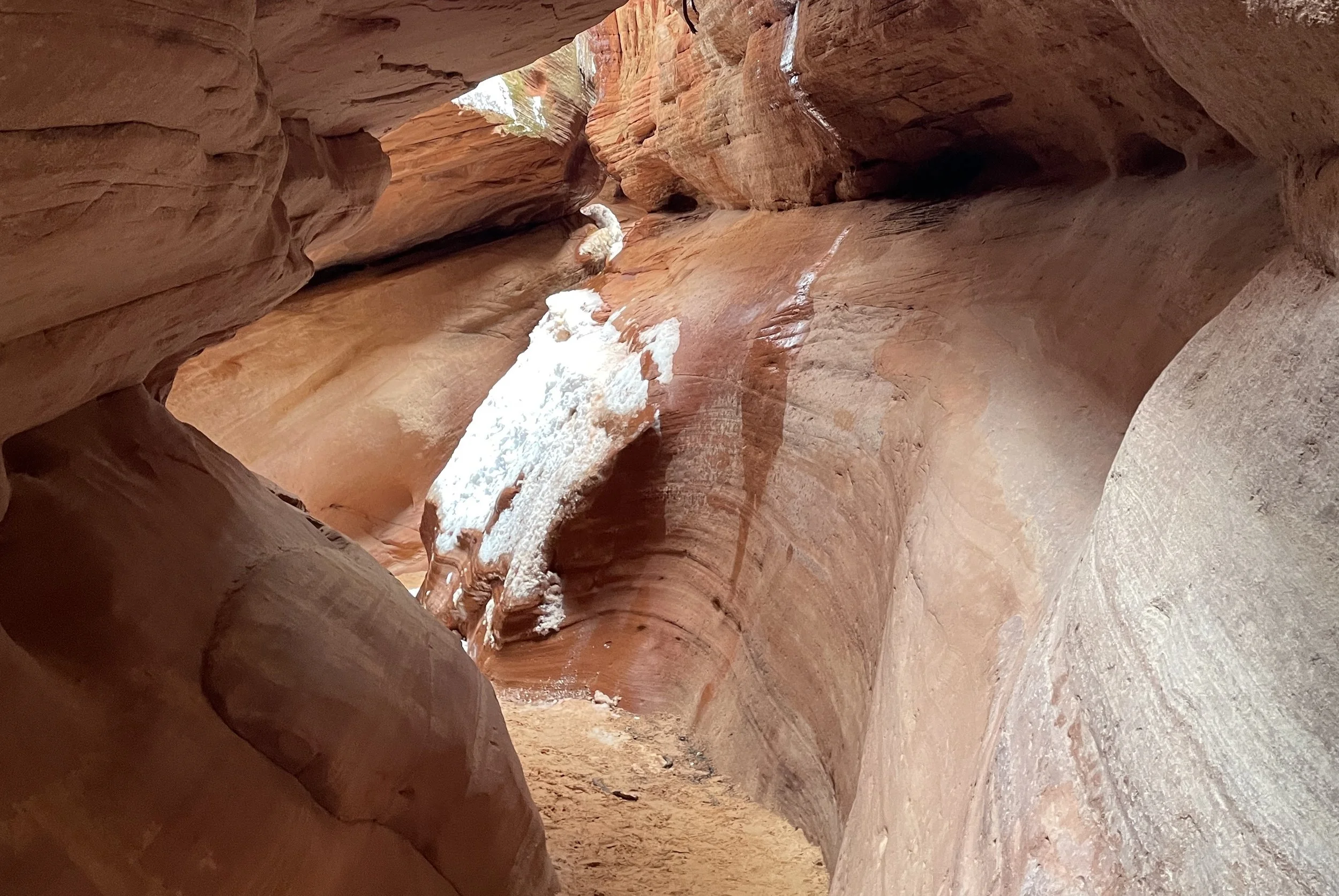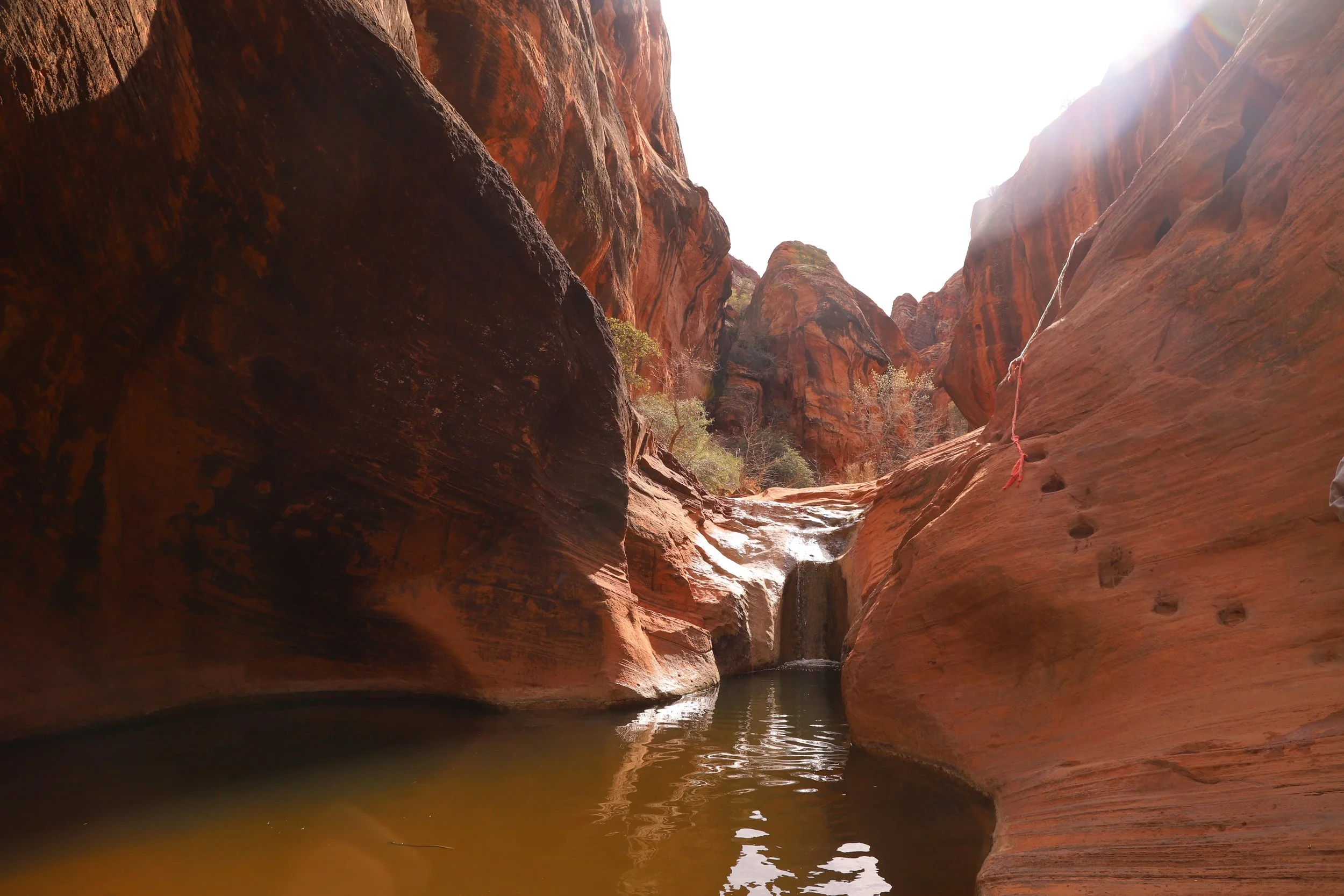Lake Superior - Split Rock Lighthouse State Park
If you would like to receive notification of future posts, please sign up below. I will not share your email address information with anyone.
Winter might be the most beautiful of the seasons, with icicles, fresh fallen snow, and frost covered trees. But when my commute time doubles and I need to walk through the parking lot doing the penguin shuffle, my feelings toward winter are less than positive. Slippery roads are part of life in MN. If we cancelled work due to snow, we wouldn’t work 6 months out of the year. A slight exaggeration, but slippery roads are a real problem. Our state’s solution is road salt – lots of road salt.
According to the 2016 Twin Cities Metropolitan Area (TCMA) Chloride Management Plan, 349,000 tons of road salt are applied annually to roads and walkways within just the 7 counties of the metro area. MnDOT estimates road salt costs $67/ton, so my state spends over $23 million each year on salt.
In addition to the cost of road salt and its application, there is an environmental impact. We put salt on the road to melt the ice, then it snows again, and we put down more salt. Where does the salt go as it is clearly not staying on the road? It ends up on the ditches – either it bounces off during initial application or traffic pushes it to the side of the road, or it might be washed off by rain. Some of the salt will go into the soil, but a large portion of it ends up in our lakes and ground water. During a rainstorm, rain rolls off the roads and fills the ditches. The water flows along the road until it joins a creek or river which flows into a lake. Our streets act like tributaries, therefore, it makes sense that what we put on our roads will eventually end up in our water.
Salt will dissolve into sodium and chloride, but these elements cannot breakdown further into anything else. Picture how big a pile of 349,000 tons of salt would be, and now imagine throwing that all into bodies of water around the Twin Cities. With no conventional treatment to remove chloride from the water (except for reverse osmosis, which is very cost prohibitive) this problem is going to get worse each year without a change in how we treat our road surfaces.
Bald Eagle on Boot Lake
Impact of Road Salt in Our Drinking Water
Chloride is an important mineral for animal life (including humans) at low levels. Chloride helps your body balance the fluid amount inside and outside of your cells. It helps your body maintain proper blood volume, blood pressure, and pH of your body fluids. Chloride enters your body primarily in the form of salt that you eat. Excess chloride is removed naturally from your body. The more negative effects in humans typically result from sodium or potassium, the two electrolytes to which chloride is most often attached. But it only takes one teaspoon of road salt to permanently pollute five gallons of water. According to the TCMA Chloride Management Plan, 39 lakes and 30% of shallow wells tested within the Twin Cities Metro Area have already been found to be impaired (having a chloride concentration greater than the safe drinking water standards).
High amounts of chloride can also lead to corrosion in our water pipes. For older pipes that contain lead, if the water is not treated properly, chloride can knock the lead free from the pipes and these particles end up in a glass of drinking water; similar to the public health crisis that occurred in Flint Michigan.
Environment Impacts of Road Salt
Too much chloride in our lakes and streams has a negative impact on aquatic life. Excess chloride can disturb the balance of fluid inside versus outside of a cell (osmosis). When there is too much chloride in water, too much water moves out of the cell. The result is that high chloride concentrations in the water can kill invertebrate life and negatively impact the food chain for fish.
High chloride concentration also impacts the density of water. Typically, in the late fall, the weather cools and the water at the surface becomes heavier while it is cooling. This upper layer of the lake sinks to the bottom bringing with it increased oxygen levels. But chloride increases the density of the water at the bottom of the lake, and consequently this can prevent the lake from turning over. Turnover is necessary for aquatic life in the winter as it increases oxygen at non-frozen depths in the lake.
St. Croix River - Interstate State Park
What Can We o?
Some level of road salt is needed to provide safe and comfortable driving and walking conditions for the public throughout a Minnesota winter. The balance that is needed is applying a minimal amount of salt to our roads and sidewalks. This is referred to as “Smart Salting.” Here are some Smart Salting tips:
1) Apply Before it Snows
De-icing works better if applied before it snows. It prevents the bond from forming between the pavement and ice. Half as much salt is needed if it’s pre-applied so keep an eye on your weather app for upcoming snow or ice events.
2) Pick the Right Salt Based on Pavement Temperatures
NaCl (road salt) will not work on pavement temperatures less than 15 deg F. It will blow away before it melts anything. MgCl2 (Magnesium Chloride) will work down to -10 deg F. KAc (Potassium Acetate) is effective to -15 deg F. CaCl2 (Calcium Chloride) is effective down to -20 deg F.
3) Consider Salt Grain Size
Small grains melt ice more quickly but are not as effective for long periods of time. Larger grain sizes take longer to see the impact, but the road will remain ice-free for a longer time. The best result might be a combination of the two sizes.
4) Spread Road Salt Evenly and Apply Less
Leave about 3-inches between salt granules. Purchase a hand-held spreader to ensure you apply a consistent amount.
5) Clear the Snow
Once it snows, clear it off by plowing or shoveling rather than applying de-icer to melt the snow.
6) Think About What You Need Before You Apply
Sand provides traction, but does not melt snow or ice. Salt melts snow and ice, but does not provide traction
7) Sweep Up the Extra
After the storm, clean up the pavement and save the salt or sand for the next storm.
8) Slow Down
it isn’t reasonable to think that we will be able to drive as fast during or just after a snowstorm as we do in the summer. The environmental and health impacts of that many chemicals are just not worth it. Your time is important, but the impacts of using chemicals are permanent.
9) Store Your Salt in a Dry Location
if your salt becomes moist, it will form into lumps and will be harder to apply evenly.
10) Work with Your Local Government and Organizations to Find Ways to Reduce the Salt Used in Your Community
Encourage snow removal and the rest of the above ideas. Share awareness with others. Encourage Smart Salting legislation.
Beauty of Winter
How can the government help?
Public and private companies who own land which people may drive or walk on are responsible for damages that occur due to icy conditions. They commonly employ diverse seasonal workers with minimal training, lack of standards, with the goal of ensuring no one slips or falls while on their property. This results in heavy over-salting practices.
New Hampshire enacted a law referred to as Voluntary Salt Applicator Certification and Liability Protection in November 2013. If an individual or company is trained to NH RSA 489-C, it means they are applying salt effectively. Any person or company that is trained or hires someone that is trained and certified is granted liability protections from slips or falls that occur during snow and ice conditions under RSA 508:22.
The training covers equipment calibration of road salt spreaders, changing the application rate based on the temperature of the pavement, pre-wetting the surface before applying salt to help it stick better to the pavement, effective plowing strategies, emerging technologies, salt accounting practices, and environmental impacts. This training is 4.5 hours long, includes a 30-minute exam for certification, and requires a 2-hour course ever 2 years to ensure the best current practices are being applied. Thus far in NH, more than 1,000 individuals and companies have been trained.
Illinois has enacted similar legislation, and New York, Maine, and Minnesota are considering similar bills. The best way you can help support a bill like this is to send letters to your state representatives from communities to which you belong that would benefit from this law (companies, places of worship, community centers, etc.).
Another idea would be to propose a bill that would require bags of road salt to be labeled with what chemicals are included, directions for which temperature each type of salt should be applied, and a reminder to shovel first before applying salt.
Together we have a chance to make significant reductions in the amount of road salt applied and save our water for future generations to come.
Additional Reading Related to Road Salt
Smart Salting Tips That Protect Minnesota Waters
Corrosive Chemistry How Lead Ended Up in Flints Drinking Water















Keyhole Canyon is a 3B I slot canyon in Zion National Park. This adventure requires rappelling gear, wetsuits, headlamps, and pre-purchased backcountry permits picked up from Zion’s Visitor Center the day before or day of the hike. The 0.7-mile roundtrip loop includes 2 slot canyons, 4 rappels, and a lot of water - some sections waist deep and other sections that require a small amount of swimming.